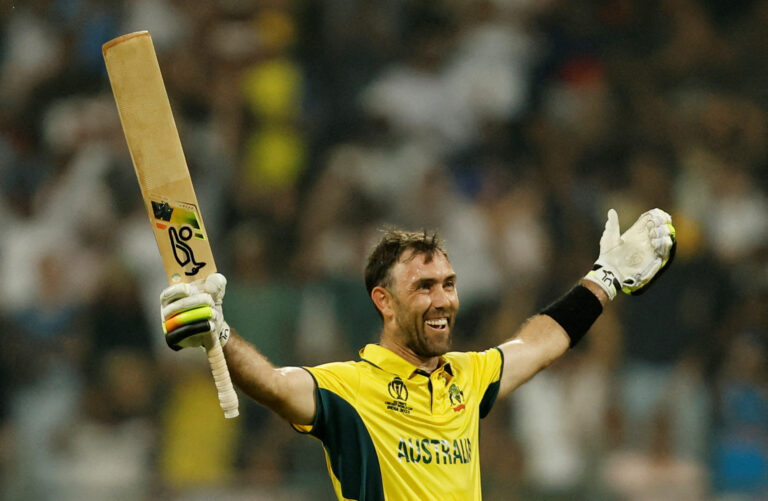The Impact of Migration on Cricket Talent Pools
11xPlay, Allpaanel: During the course of history, cricket has become a global sport with numerous countries participating at various levels. The migration patterns of cricket players have played a significant role in shaping the landscape of the sport. Players from cricket-playing nations have often moved across borders in search of better opportunities, leading to a diverse mix of talent in different teams.
Countries like India, Australia, England, and the West Indies have been key hubs for cricket talent migration. The Indian subcontinent has produced a plethora of world-class cricketers who have migrated to other countries to ply their trade in leagues and international competitions. Similarly, Australian and English cricketers have also ventured out to different parts of the world, enriching the sport with their skills and experiences.
Historical Trends in Player Migration
In the realm of cricket, player migration has been a longstanding phenomenon that has shaped the landscape of the sport over the years. Historically, we have witnessed a significant movement of players across different countries, driven by various factors such as better opportunities, financial incentives, and the pursuit of new challenges. This trend dates back to the early days of cricket’s evolution, where players would often cross borders to compete in different leagues and tournaments.
As the sport continued to gain global popularity, the trends in player migration became more pronounced, with players from traditional cricket-playing nations venturing out to explore opportunities in emerging cricket markets. This exchange of talent not only enriched the game but also fostered a sense of camaraderie and cultural exchange among players from diverse backgrounds. Over time, historical player migrations have contributed to the globalization of cricket, creating a melting pot of talent from different parts of the world and cementing cricket as a truly global sport.
Challenges Faced by Migrant Cricket Players
Migrant cricket players often encounter language barriers as they move to new countries to pursue their sporting careers. Communication can be a significant challenge, affecting their ability to integrate with teammates, coaches, and support staff. Understanding the local language is crucial for effective teamwork, strategic planning, and building strong relationships within the team and the cricketing community at large.
Another common challenge for migrant cricket players is adapting to a new cultural environment. Moving to a different country can lead to feelings of isolation, homesickness, and cultural shock. Migrant players may struggle to adjust to the cultural norms, traditions, and social dynamics of their new surroundings, which can impact their overall mental well-being and performance on the field. Finding a sense of belonging and acceptance within the new cricketing community is essential for migrant players to thrive and excel in their careers.
Impact of Migration on National Cricket Teams
Migration has become a significant factor influencing the composition and performance of national cricket teams around the world. The influx of migrant players has led to teams becoming more diverse in terms of skill sets, playing styles, and cultural backgrounds. This diversity has often been viewed as a strength, as it brings a variety of perspectives and approaches to the game, ultimately enhancing the team’s capabilities on the field.
However, the impact of migration on national cricket teams is not without its challenges. The integration of migrant players into established teams can sometimes lead to friction and tensions, particularly when differences in language, culture, or playing philosophies come into play. Maintaining team cohesion and establishing a sense of camaraderie among players from diverse backgrounds can be a delicate balancing act for team management.
Diversity in Cricket Talent Pools Due to Migration
The influx of cricket players from various countries has significantly diversified the talent pools of cricket-playing nations. This increased diversity has brought about a fusion of playing styles, techniques, and strategies, adding an exciting dimension to the game. With players from different backgrounds and cultures coming together, cricket teams are now able to draw upon a wider range of skills and experiences, leading to a more dynamic and competitive environment on the field.
The diverse talent pools resulting from migration have also fostered a spirit of collaboration and mutual learning among players. As individuals from different cricketing traditions unite to represent a common team, they share their knowledge, learn from each other’s strengths, and adapt to new playing conditions. This blend of perspectives not only enhances the performance of the team but also promotes a sense of unity and camaraderie among players, transcending boundaries and creating a truly global cricketing community.
Role of Migration in Globalization of Cricket
Migration plays a pivotal role in the globalization of cricket by transforming the landscape of international competitions. As players move across borders in pursuit of opportunities, they bring with them diverse skills, experiences, and playing styles, enriching the overall talent pool in the sport. This eclectic mix of players from different nations not only fosters a spirit of competition but also promotes cultural exchange on the cricket field, creating a more inclusive and globalized environment for the sport.
Moreover, the migration of cricket players facilitates the sharing of knowledge and techniques, leading to the evolution and innovation in the game. As players adapt to different playing conditions, they develop a greater understanding of the nuances of the sport, thereby enhancing the overall quality of cricket played worldwide. This cross-pollination of cricketing talent not only enhances the competitiveness of teams but also elevates the standard of the game, making cricket a truly global and dynamic sport.
Economic Factors Driving Migration of Cricket Players
In the world of cricket, economic factors play a significant role in driving the migration of players between nations. The promise of better financial opportunities often lures cricketers to explore options beyond their home countries. Leagues like the Indian Premier League (IPL) and the Big Bash League (BBL) offer lucrative contracts to attract top talent from around the globe. The potential for substantial earnings through endorsements, sponsorships, and match fees is a strong incentive for players to seek opportunities in more financially rewarding cricketing environments.
Furthermore, the disparity in pay scales between different cricket playing nations also influences player migration. Some countries struggle to provide competitive salaries and support systems for their players, leading talented individuals to seek greener pastures elsewhere. The pursuit of a successful cricketing career combined with the desire for greater financial security often drives players to move across borders in pursuit of better economic opportunities within the sport.
Social Integration of Migrant Players in New Teams
Social integration of migrant players in new teams is a crucial aspect that significantly impacts team dynamics and performance. Transitioning into a new environment, both on and off the field, can pose challenges for players who have migrated from different countries. Building strong relationships with teammates and staff, understanding the team’s culture, and adapting to new playing strategies are key elements in the successful integration of migrant players.
New teams play a vital role in facilitating the social integration of migrant players by providing support systems and fostering a sense of belonging. Encouraging open communication, organizing team-building activities, and promoting cultural exchange among players can help bridge the gap between different backgrounds. As teams become more diverse due to player migration, the ability to integrate and leverage the unique skills and experiences of each individual becomes essential for overall team success.
Strategies to Harness the Potential of Migrant Cricket Talent
To maximize the potential of migrant cricket talent, it is essential for cricket-playing nations to implement robust scouting and recruitment programs. This involves identifying talented players from diverse backgrounds and providing them with opportunities to showcase their skills on local and international platforms. Additionally, creating pathways for the development and integration of migrant players into national teams can enhance the overall competitiveness and diversity of cricket talent pools.
Moreover, fostering a supportive and inclusive environment within cricket organizations is crucial for the successful harnessing of migrant cricket talent. This includes offering cultural sensitivity training for coaches and teammates, providing language support for effective communication, and ensuring equal opportunities for growth and advancement regardless of a player’s background. By promoting diversity and inclusion in cricket, teams can benefit from the unique perspectives and talents that migrant players bring to the sport, ultimately enriching the overall quality and dynamism of the game.
Future Outlook for Migration and Cricket Talent Pools
In the coming years, the global landscape of cricket is likely to witness a continued rise in player migration across nations. As the sport grows in popularity and commercial potential, players seek opportunities beyond their home countries to enhance their careers and skills. This trend is expected to contribute to the further diversification of talent pools in various cricket-playing nations, enriching the competitive dynamics of the game.
Moreover, the increasing migration of cricket players is anticipated to prompt national teams to adapt and evolve their strategies for talent identification and development. With a more diverse pool of players to choose from, teams will need to adopt innovative approaches to harness the strengths and talents of migrant players effectively. This shift may also lead to enhanced collaborations and partnerships between cricket-playing nations, fostering a more interconnected and competitive global cricketing ecosystem.
What are some of the challenges faced by migrant cricket players?
Some challenges faced by migrant cricket players include cultural differences, homesickness, language barriers, and adapting to new playing conditions.
How does migration impact national cricket teams?
Migration can impact national cricket teams by adding diversity to talent pools, providing new skill sets, and contributing to the overall globalization of the sport.
What economic factors drive migration of cricket players?
Economic factors such as higher salaries, better playing opportunities, and sponsorship deals can drive migration of cricket players to different countries.
How can teams ensure social integration of migrant players in new teams?
Teams can ensure social integration of migrant players by providing support systems, cultural awareness training, and fostering a sense of belonging within the team.
What are some strategies to harness the potential of migrant cricket talent?
Some strategies to harness the potential of migrant cricket talent include providing equal opportunities, nurturing talent through proper training programs, and creating a supportive environment for players to thrive.







